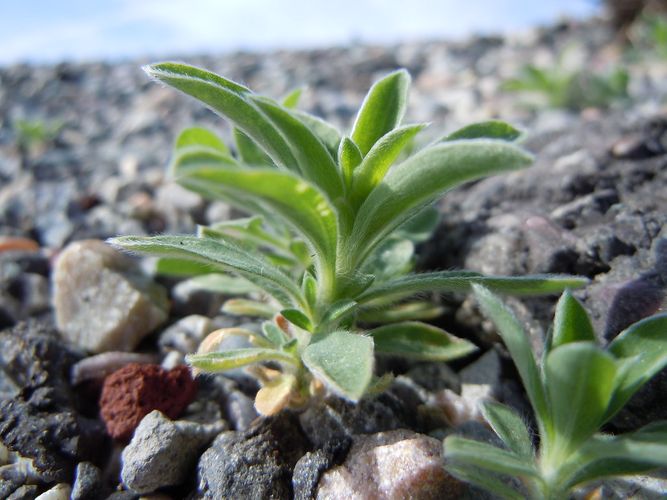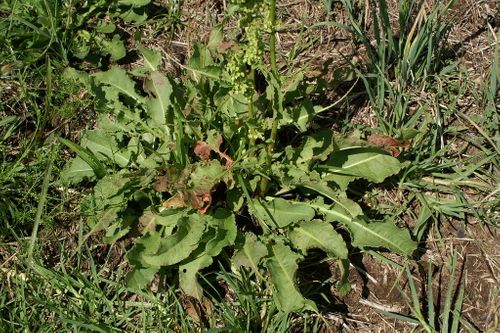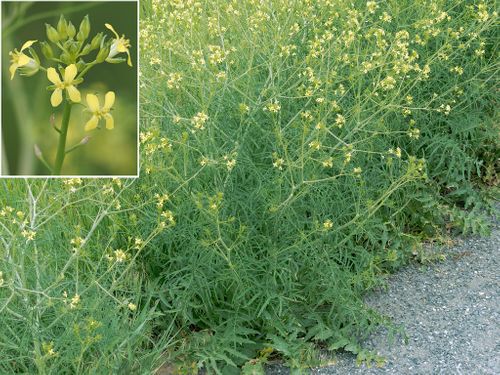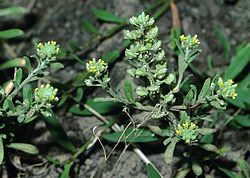It's that beautiful time of year again: spring! The time when everyone's favorite flowers, trees and plants spring to life! But with that beauty comes weeds. Here are a few common weeds that start to pop up in Colorado during spring, and a few tips on how to "nip em' in the bud" from the weed pros at Back 40!

Spring Weeds in Colorado: Not Just Noxious... Obnoxious!
Back 40 Team
Spring Time = Weed Time
Spring Time means lots of blooming flowers and sprouting plants, but one kind of plant no one likes to see is weeds! In northern Colorado, there is no shortage of weeds that love to pop up at the same time as many of our favorite native plants. If left to grow unchecked, they can become a persistent nuisance to any farmer or gardener. In this blog post we'll talk about a lot of the common culprits that you may see appearing on your property, and what can be done to rid your land of these pests before they become a problem.

Image by Matt Lavin / CC BY-SA 2012
Kochia
Kochia, a fast-growing invasive weed, often starts sprouting in the spring all across the front range. While its soft, green appearance may seem harmless at first, it quickly becomes a troublesome plant due to its aggressive growth, drought tolerance, and ability to outcompete native vegetation. If left unchecked, kochia can spread rapidly, reducing biodiversity, dominating farmland, and even creating fire hazards when it matures and dries out later in the year. Killing kochia in the spring, as soon as it emerges, is critical because it is easier to control while still small and before it has a chance to flower, set seeds, or develop its deep taproot. Early intervention helps prevent its spread and mitigates its long-term ecological and agricultural impact.

Image by Harry Rose / CC BY 2014
Curly Dock
Curly dock, a perennial weed, begins emerging in the spring across Colorado, often in moist, disturbed soils such as ditches, pastures, and roadsides. While its tall stalks and distinctive wavy-edged leaves might seem unassuming, this plant is highly problematic due to its prolific seed production and ability to thrive in poor soil conditions. Curly dock can quickly dominate an area, displacing native plants, reducing forage quality for livestock, and becoming a nuisance in agricultural fields. It is crucial to control curly dock in the spring when it first appears, as targeting it early—before it flowers or sets seeds—prevents its spread and helps protect the health of the surrounding ecosystem. Early removal also ensures that its deep taproot, which can make it harder to control later, is less developed.

Image by Nature80020 / CC BY 2014
Mustards
Mustard species, such as flixweed and tumble mustard, are common invasive plants that begin sprouting across Colorado in the spring. These fast-growing weeds thrive in disturbed soils and open areas, quickly forming dense stands that crowd out native plants and reduce biodiversity. Their ability to produce abundant seeds allows them to spread rapidly, making them a persistent problem for both natural ecosystems and agricultural lands. Mustard species are especially problematic because they serve as hosts for certain pests and diseases that can impact crops. Controlling mustard species in the spring, while the plants are still small and before they flower, is essential. Early removal reduces seed production and prevents these aggressive plants from taking over, helping to maintain healthier ecosystems and farmland.

Yellow Alyssum
Yellow alyssum, an invasive annual weed, begins to appear in the spring across Colorado's landscapes, often thriving in disturbed areas like roadsides, gravel pits, and agricultural fields. With its bright yellow flowers and low-growing habit, it may initially seem appealing; however, this plant can quickly become problematic as it competes with native vegetation and crops for resources. Yellow alyssum produces a significant number of seeds that can remain viable in the soil for several years, allowing it to spread rapidly and establish dense populations. Controlling yellow alyssum early in the spring is crucial, as tackling it while still small prevents seed production and reduces the likelihood of future infestations. By acting promptly, landowners can help protect native ecosystems and maintain agricultural productivity.
Tips For Proper Management
Effective spring weed control is crucial for managing invasive species like kochia, curly dock, mustards, and yellow alyssum, all of which can cause significant ecological and agricultural harm in Colorado. These weeds are most vulnerable and easiest to control when they are just sprouting in the early spring, as their root systems are shallow and they have not yet developed seeds. For smaller infestations, mechanical removal—such as hand-pulling or shallow hoeing—can be effective if done carefully to remove the entire plant, including the roots. However, for larger or more persistent infestations, herbicide treatments are often the most efficient and long-term solution. Applying selective herbicides early in the season, while the weeds are still young and actively growing, ensures optimal absorption and prevents seed production.
We can help!
For those looking for a comprehensive approach, Back 40 can handle the entire management process for you, from assessment to implementation of the most effective control strategies. By leveraging professional expertise and tailored solutions, you can ensure optimal results while maintaining the health of your landscape. By combining early intervention, proper timing, and expert assistance, landowners can significantly reduce invasive weed populations and protect native ecosystems and agricultural productivity.
